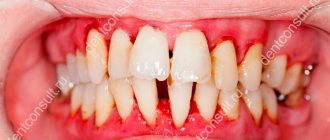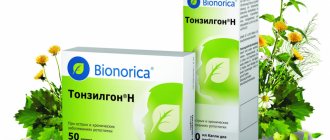Pharmacodynamics and pharmacokinetics
Tannins - what are they?
In order to more clearly understand the mechanism of action of tannins , the effectiveness and safety of their use, you must first understand what tannins are, how they are extracted and what properties they are characterized by.
Tannins (tannic acids, gallotannic acids) are phenolic substances with a large number of –OH groups. The chemical formula of tannin is C76H52O46.
In the plant kingdom, these substances are quite widespread and have a characteristic astringent taste and tanning properties . The ability of tannins to form strong bonds with complex carbohydrates , proteins and other natural polymers has found its application both in industry and in medicine.
To date, natural tannin has been found in many plants: chestnut, oak, acacia, larch, spruce, eucalyptus, cocoa, camellia sinensis, pomegranate, cinchona, persimmon, quebracho, etc. Most often, this organic compound was extracted from the ink nuts of oak, tanning mackerel and tannic sumac.
Later, a method was found for producing tannin chemically, where the synthesized preparation not only had all the properties of the natural one, but also surpassed it in a number of criteria: the virtual absence of impurities, convenient consistency, control of production stages.
Today, synthetic tannin is a medicine that, due to its properties, is used in the treatment of a number of diseases.
The astringent effects of the drug are due to its ability to precipitate proteins with the parallel formation of dense albuminates . When the drug is applied to the wound surface or mucous membranes, partial coagulation of the proteins contained in the wound exudate or mucus , which leads to the formation of a durable protein film the nerve endings in them from further irritation .
The parallel action of the drug leads to local vasoconstriction , a decrease in inflammation and a decrease in pain .
general characteristics
Tannins are a yellow-brown powder. This substance is often found in plants, mainly in roots, tree bark, leaves, and some fruits. High concentrations are found in oak bark.
Tannin solutions are acids with an astringent taste. In the food industry it gives products a tart taste, a certain color and aroma. Tannic acid is used in winemaking and brewing. And thanks to its astringent properties, it has found application in medicine - for the treatment of tonsillitis, pharyngitis, skin rashes, hemorrhoids.
Content:
- general characteristics
- Classification of tannins
- Physicochemical characteristics
- Natural and synthetic tannins: what's the difference?
- Tannic acid as a medicine
- The “dark” side of tanning agents
- Products rich in tanning substances
- As a dietary supplement
- Tannins in wine
- Tannin in tea
- Tanning agents and industry
- Interaction with other substances
Water-soluble tanning substances with iron compounds form a dark blue or dark green solution. This property allows tannins to be used to make ink. In light industry it is used for leather production and fabric dyeing.
Indications for use
- inflammation of the gums, larynx, oral cavity, with colds , runny nose , laryngitis , etc.;
- soft tissue necrosis ulcers , burns , cracked nipples ;
- intoxication with alkaloids (with the exception of eserine salicylate , morphine , atropine , cocaine , nicotine , due to the formation of bonds with tannin that are destroyed by gastric juice);
- as an antidote (for intoxication with heavy metals: mercury salts, lead, etc.);
- as an astringent;
- for diarrhea ;
- in the treatment of hemorrhoids ;
- for viral diseases ( acrodermatitis papularis , chickenpox , etc.);
- to increase blood clotting ;
- for the treatment of various dermatological infections of viral etiology ( eczema , herpetic infections , exanthema , etc.);
- healing of anal fissures and first degree burns
- therapy of surgical wounds in proctology, urology and gynecology;
- skin diseases in children ( erythema of the buttocks , intertrigo , impetigo , sweating of the feet, etc.).
Products rich in tanning substances
Probably, if someone wanted to compile a complete list of products containing tannins, they would have to rewrite almost all representatives of the earth's flora, since almost all plants contain tanning substances in varying concentrations in different parts. We will name only the most popular products in which the concentration of tannins is close to the maximum.
Drinks: tea, cocoa.
Berries: grapes (dark varieties), black currant, dogwood, bird cherry, pomegranate.
Fruits: quince, persimmon.
Vegetables: rhubarb, red beans.
Nuts: walnuts, almonds.
Spices: cinnamon, cloves.
In addition, acorns, chestnuts, eucalyptus, galangal root and dark chocolate contain powerful stores of tannins.
Instructions for use Tannin
Externally, prescribed in the form of lubrication and rinsing.
To treat inflammatory processes in the larynx, oral cavity, pharynx, and nose, use a 1–2% glycerin or aqueous solution of tannin in the form of rinses.
For bedsores , ulcers , burns , various cracks , 3%, 5% and 10% solutions or ointments of the drug are used, depending on the severity.
For gastric lavage , in case of poisoning with heavy metals or alkaloids, a 0.5% aqueous solution in a volume of 2 liters is prescribed.
Classification of tannins
Taking into account their chemical properties, there are 2 groups of tannins: hydrolysable (dissolves in water) and condensed.
Representatives of the first group, after hydrolysis with acids or enzymes, create gallic and ellagic acids. From a chemical point of view, they are esters of phenolic acid. Gallic acid is mainly found in rhubarb and cloves, and ellagic acid is found in eucalyptus leaves and pomegranate bark.
Condensed tannins are resistant to hydrolysis and are produced from flavonoids. These substances are found in henna bark, male fern seeds, tea leaves, and wild cherry bark.
special instructions
Many modern doctors do not recommend the drug for oral use for the treatment of diarrhea, due to the fact that tannin, first of all, creates bonds with the proteins of the gastric mucosa and enters the intestines in insufficient quantities.
It is not recommended to use it as an enema for anal fissures , due to the risk of blood clots .
In case of preventing acute intoxication with alkaloids , it should be remembered that with some alkaloids ( cocaine , morphine , atropine , physostigmine , nicotine ), tannin forms unstable compounds, which requires gastric lavage as soon as possible.
As a dietary supplement
In the food industry, tannins are known as additive E181 (stabilizer, emulsifier, colorant) - a yellow-brown powder with an astringent taste and a specific odor. Extracts of plants of the genus sumac and galls serve as raw materials for E181.
The substance gained its popularity in the food industry due to its ability to impart an astringent taste. In addition, it is actively used due to its ability to protect the skins of vegetables and fruits from rotting and drying out. If we talk about the effect on taste buds, then this substance is a little reminiscent of glutamic acid, and gives food products a specific thyme taste. Tannic acid in the form E181 is also used as a clarifier for beer, wine and other products.
Reviews
To date, reviews about tannin are few. The thing is that preparations based on this substance (ointments, solutions, creams) are most often prepared in pharmacies themselves, which have become fewer and fewer in recent years. The substance itself is included in some drugs, the effect of which in most cases is assessed on the positive side.
So if you are lucky enough to find a pharmacy that still produces its own tannin-based drugs, most likely this drug will help you overcome some painful conditions and is more likely than other drugs not to lead to any complications.
Physicochemical characteristics
Tannic acid is a substance that easily dissolves in water, combines with alcohol almost as easily and reacts slightly less well with glycerin. Tannins are well diluted with acetone and an alkaline substance, moderately soluble in chloroform, ethyl acetate and other substances. Chemical reactions with iron compounds produce a purple, violet or black precipitate. When combined with water, they produce colloidal solutions, and under the influence of oxygen they oxidize and acquire a dark color. Under the influence of high temperatures (up to 200 degrees Celsius), tannins do not melt, but become charred. This process is accompanied by the release of pyrogallol and pyrocatechol. Most tannins are optically active compounds.
Price, where to buy
Many people interested in this substance are wondering where to buy tannin today. Unfortunately, it is most often impossible to buy tannin in a pharmacy, since there are quite a few pharmacies left that independently produce medications and the production of drugs according to a doctor’s prescription has fallen into decline.
The easiest way to find this substance, in powder form, is in online stores, where tannin is sold as “food grade”.
The price of Tannin in Ukraine is 150 hryvnia per 30-50 grams.
- Online pharmacies in RussiaRussia
ZdravCity
- Neotanin triactive lip gel for skin care for children and adults 10 mlINTELBIO LLC
233 rub.order - Neotanin comfort plus cream 250ml LLC "INTELBIO"
RUB 362 order
- Neotanin cream for children and adults, tube 50 ml LLC "INTELBIO"
RUB 247 order
- Neotanin lotion (susp.) for children and adults. fl. 100ml LLC "INTELBIO"
RUB 311 order
- Neotanin spray for children and adults fl. 100ml LLC "INTELBIO"
RUB 309 order
The “dark” side of tanning agents
Excessive consumption of products containing tanning substances is fraught with not the most pleasant consequences. In particular, digestive disorders, liver or kidney dysfunction are possible. Under the influence of tannins, irritation of the intestinal walls is possible. Excess tannic acid interferes with the proper absorption of beneficial minerals, in particular iron, which can lead to the development of anemia.
It is important for people whose bodies do not perceive tannins to treat these substances with special caution. Otherwise, allergies with very serious consequences are possible. It is also important for people with heart failure and unstable blood pressure to avoid tannin-containing products. Excessive consumption of tannins can cause indigestion and disrupt appetite.
Tannin in tea
Best materials of the month
- Coronaviruses: SARS-CoV-2 (COVID-19)
- Antibiotics for the prevention and treatment of COVID-19: how effective are they?
- The most common "office" diseases
- Does vodka kill coronavirus?
- How to stay alive on our roads?
But wine is not the only drink that contains tannins. The concentration of this substance in tea is also quite high. Tannic acid is present in all types of drink, but, as in the case of grapes, some varieties contain more of it.
First of all, this applies to green varieties. Some of them contain more than 30 percent tannin. But it is worth noting that the concentration of tannic acid in tea plants depends on several factors. Firstly, it is important in what climatic and natural conditions the product was grown. It is believed that in Ceylon, Indian and Javanese teas the concentration of tannins is higher, hence their amazing tart taste. In addition, leaves collected in July or August contain much more substance than in drinks “born” in May or September. Secondly, the age of the plant also matters: the maximum amount of tanning substances is found not in young shoots, but in older leaves.
By the way, tannic acid contained in tea has a slightly different chemical composition from its analogue from other products and its synthetic “brother”. Tea tannins resemble vitamin P and have a strengthening effect on blood vessels.



